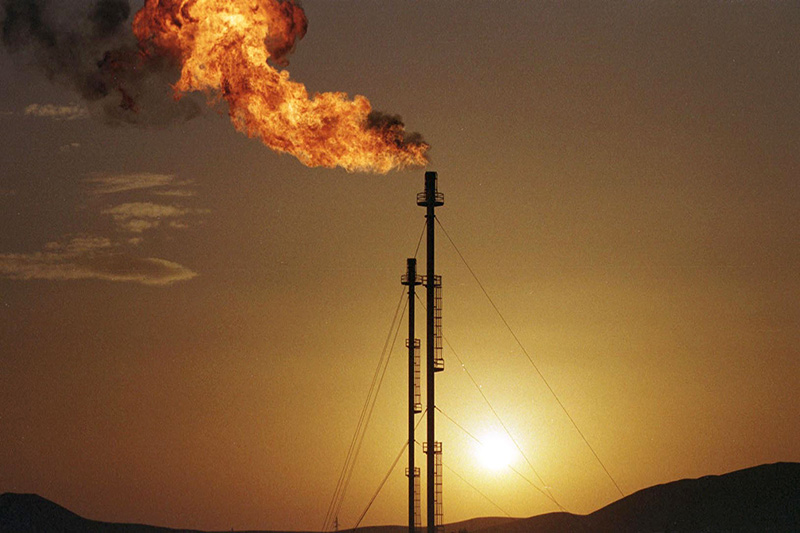Investing.com - Natural gas futures ended Friday's session at the highest level since December, as forecasts showing cooler-than-normal temperatures in the first two weeks of October boosted near-term demand expectations for the heating fuel.
On the New York Mercantile Exchange, natural gas futures for delivery in November added 0.5% on Friday to settle at USD3.313 per million British thermal units by close of trade.
Earlier in the day, prices hit a session high of USD3.329 per million British thermal units, the strongest level since December 11, 2011. On the week, front-month natural gas prices rallied 7.1%.
Updated weather forecasts Friday predicted cooler-than-normal temperatures over the next 11 to 15 days across most parts of the U.S., boosting early-Autumn heating demand.
Weather service provider AccuWeather said that it expected temperatures to cool further in the second week of October, with overnight lows slipping to the high 30s and low 40s Fahrenheit range.
Natural gas demand typically rises in the summer as air-conditioning use boosts utility demand, then sinks in the fall as demand weakens ahead of the peak winter heating season.
Despite the week's strong rally, ongoing concerns over bloated U.S. inventory levels was likely to cap further gains in the near-term.
The U.S. Energy Information Administration said in its weekly supply report published Thursday that natural gas storage in the U.S. rose by 80 billion cubic feet last week, just above market expectations for an increase of 76 billion cubic feet.
Last year, stocks rose by 104 billion cubic feet, while the average rise in the week over the previous five years was 76 billion cubic feet.
Total U.S. gas supplies stood at 3.576 trillion cubic feet, 8.6% above the five-year average level for the week.
Inventory did not top the 3.4-trillion cubic feet level in 2011 until October 5, with stocks peaking at a record 3.852 trillion cubic feet in November of last year.
Market analysts have warned that without strong demand through the early-Autumn shoulder season, gas inventories will reach the limits of available capacity later this year.
Early injection estimates for this week’s storage data range from 55 billion cubic feet to 81 billion cubic feet, compared to last year's build of 101 billion cubic feet. The five-year average change for the week is an increase of 78 billion cubic feet.
Elsewhere in the energy complex, light sweet crude oil futures for November delivery traded at USD92.03 a barrel by close of trade on Friday, losing 1.1% on the week.
Heating oil for November delivery rose 0.65% over the week to settle at USD3.145 per gallon by close of trade Friday.
On the New York Mercantile Exchange, natural gas futures for delivery in November added 0.5% on Friday to settle at USD3.313 per million British thermal units by close of trade.
Earlier in the day, prices hit a session high of USD3.329 per million British thermal units, the strongest level since December 11, 2011. On the week, front-month natural gas prices rallied 7.1%.
Updated weather forecasts Friday predicted cooler-than-normal temperatures over the next 11 to 15 days across most parts of the U.S., boosting early-Autumn heating demand.
Weather service provider AccuWeather said that it expected temperatures to cool further in the second week of October, with overnight lows slipping to the high 30s and low 40s Fahrenheit range.
Natural gas demand typically rises in the summer as air-conditioning use boosts utility demand, then sinks in the fall as demand weakens ahead of the peak winter heating season.
Despite the week's strong rally, ongoing concerns over bloated U.S. inventory levels was likely to cap further gains in the near-term.
The U.S. Energy Information Administration said in its weekly supply report published Thursday that natural gas storage in the U.S. rose by 80 billion cubic feet last week, just above market expectations for an increase of 76 billion cubic feet.
Last year, stocks rose by 104 billion cubic feet, while the average rise in the week over the previous five years was 76 billion cubic feet.
Total U.S. gas supplies stood at 3.576 trillion cubic feet, 8.6% above the five-year average level for the week.
Inventory did not top the 3.4-trillion cubic feet level in 2011 until October 5, with stocks peaking at a record 3.852 trillion cubic feet in November of last year.
Market analysts have warned that without strong demand through the early-Autumn shoulder season, gas inventories will reach the limits of available capacity later this year.
Early injection estimates for this week’s storage data range from 55 billion cubic feet to 81 billion cubic feet, compared to last year's build of 101 billion cubic feet. The five-year average change for the week is an increase of 78 billion cubic feet.
Elsewhere in the energy complex, light sweet crude oil futures for November delivery traded at USD92.03 a barrel by close of trade on Friday, losing 1.1% on the week.
Heating oil for November delivery rose 0.65% over the week to settle at USD3.145 per gallon by close of trade Friday.
